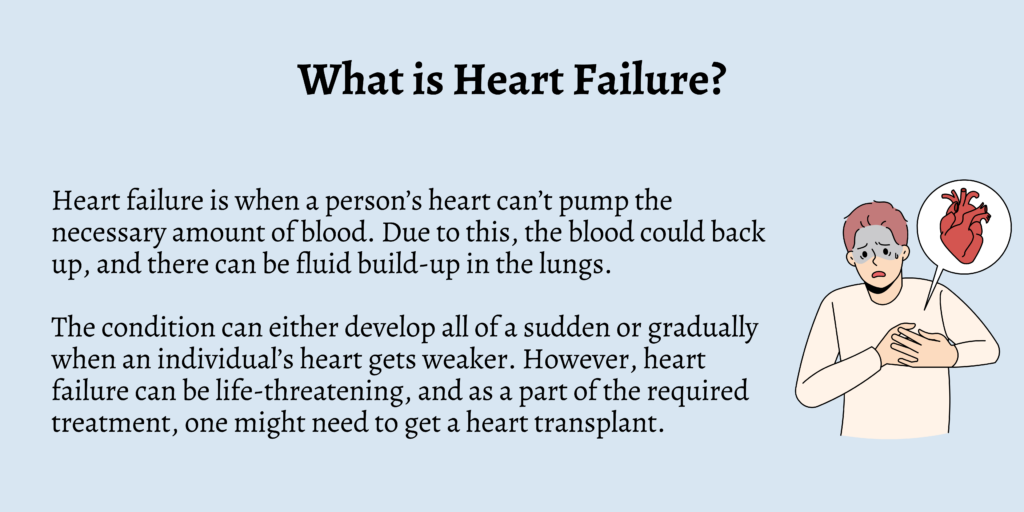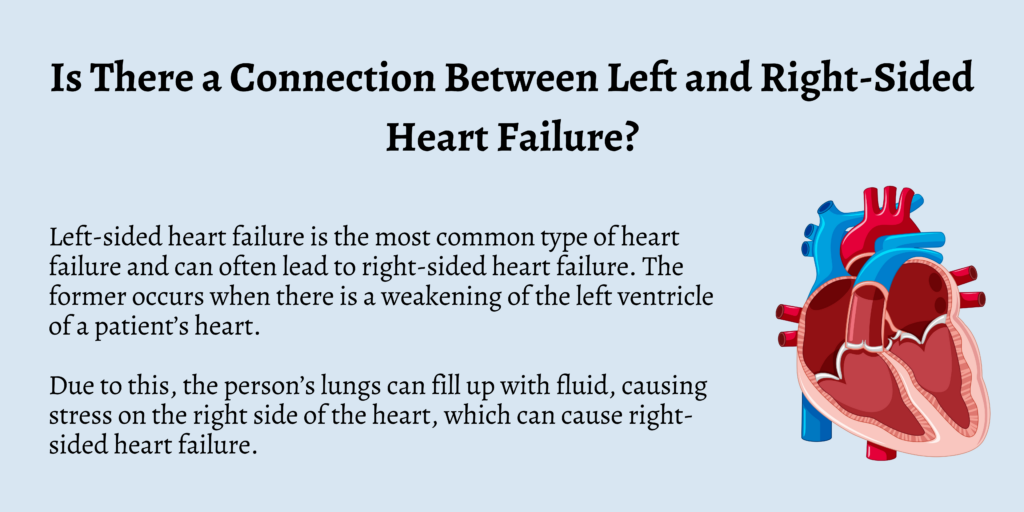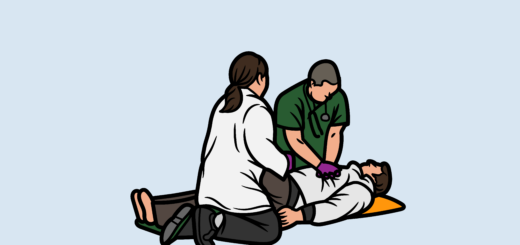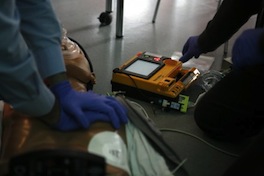What Is the Difference Between Left and Right Sided Heart Failure?
A person could suffer from heart failure when there is a weakening of the heart muscles. It’s usually a chronic condition, meaning the symptoms remain and don’t improve with time.
Heart failure can occur in:
- The right side of the heart
- The left side of the heart
- Both sides
Although the condition is more commonly seen in men, the possibility of women dying because of heart failure is higher if it’s not treated on time.
Left-sided heart failure occurs when the left side of the heart becomes weak, limiting the heart’s ability to pump blood into the system.
If they suffer from right-sided heart failure, it signifies that the right side of their heart is weak, due to which there’s fluid buildup in the veins.
What is Heart Failure?
Heart failure is when a person’s heart can’t pump the necessary amount of blood. Due to this, the blood could back up, and there can be fluid build-up in the lungs.
The condition can either develop all of a sudden or gradually when an individual’s heart gets weaker. However, heart failure can be life-threatening, and as a part of the required treatment, one might need to get a heart transplant.
Treatment for heart failure can also include getting a device that can help the patient’s heart pump blood effectively.
Types of Heart Failure
Heart failure can be categorized into three types:
- Left-sided heart failure, which can further be divided into two categories, namely systolic and diastolic failure
- Right-sided heart failure
- Congestive heart failure
Left ventricular failure (LVF)
LVF is an acute life threatening condition. It occurs when the muscle of the left ventricle is strained and it may be the result of a heart attack. The strain on the muscle reduces the efficiency of the left ventricle so that there is backpressure into the left atrium and from there into the lungs. This leads to swelling in the lung tissues (pulmonary oedema) and resulting breathlessness
Signs and Symptoms of LVF
- Severe breathlessness (sudden onset)
- Anxiety
- Cough producing frothy sputum (sometimes blood stained)
- Excess sweating
First aid treatment
This is a medical emergency!
- Call for advanced medical assistance
- Sit the casualty upright – this will help with their breathing
- Assist the casualty to use their own medication
- Monitor pulse, breathing and level of consciousness until help arrives
Right ventricular failure (RVF)
Unlike LVF this is a chronic condition, which usually develops slowly. It occurs when the right ventricle is strained and this leads to back pressure in the same kind of way but into the right atrium and the venous system. Oedema (swelling) is usually seen around the ankles but may be on the back if the casualty is in bed for long periods of time.
Signs and symptoms
- Oedema (swelling) especially in the ankles, shins or lower back
- Nausea & vomiting
- Abdominal pain and distension
- Lethargy and tiredness
Management
This is a chronic condition which needs managing by a medical professional.
Is There a Connection Between Left and Right-Sided Heart Failure?
Left-sided heart failure is the most common type of heart failure and can often lead to right-sided heart failure. The former occurs when there is a weakening of the left ventricle of a patient’s heart.
Due to this, the person’s lungs can fill up with fluid, causing stress on the right side of the heart, which can cause right-sided heart failure.
Risk Factors for Left or Right-Sided Heart Failure
The risk factors associated with left and right-sided heart failure include:
- Diabetes
- Coronary artery disease
- Obesity
- Smoking
- Irregular heartbeat
- Sleep apnea
- Consumption of alcohol
- Viral infections
- Certain medications for diabetes
- Congenital heart disease
- High blood pressure
- Heart attack
- Family history with instances of heart failure
How Long Does It Take to Recover from Heart Failure?
Heart failure is a long-term condition that doesn’t just go away with time. Since it can’t be cured, the only way to deal with it is by taking measures that keep the symptoms under control, which includes making changes to one’s lifestyle.
How to Prevent Left or Right-Sided Heart Failure
Listed below are the lifestyle changes that can help in treating and preventing right or left-sided heart failure:
- Giving up smoking
- Consuming less alcohol
- Watching salt intake
- Maintaining a moderate body weight
- Having a proper sleep schedule
- Finding better ways to manage stress levels
- Indulging in regular exercise
- Keeping blood pressure levels under control
FAQs
1. Which type of heart failure is more common?
Left-sided heart failure is the most common type of heart failure.
2. Can heart failure be treated through medicines?
Yes, heart failure can be treated through medicines when it’s in the early stages.
3. Can left-sided heart failure cause right-sided heart failure?
Yes, left-sided heart failure can lead to right-sided heart failure.
4. What are the risk factors associated with heart failure?
Some of the risk factors associated with heart failure include obesity, high blood pressure, diabetes, and smoking.
Conclusion
If heart failure is detected at an early stage, it is usually treated through medication. Various drugs serve various purposes, such as:
- Slowing the heart rate
- Preventing blood clots
- Lowering the cholesterol levels
By making certain changes to your lifestyle, a person can improve the health of their heart and prevent the possibility of experiencing complications. Consult your doctor to get a strategy to manage the condition of heart failure and also deal with any underlying issues.







